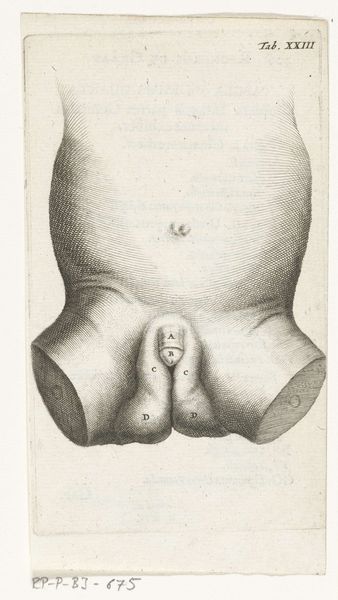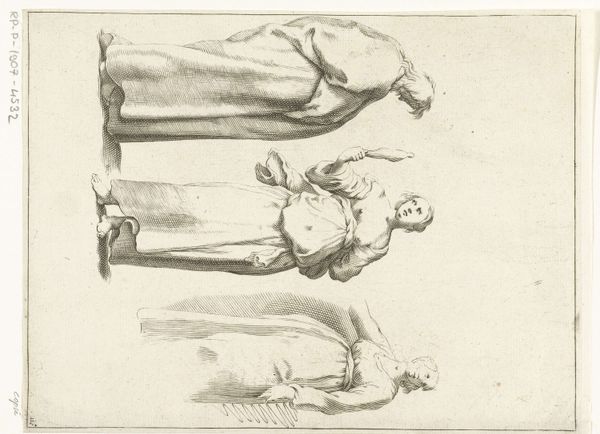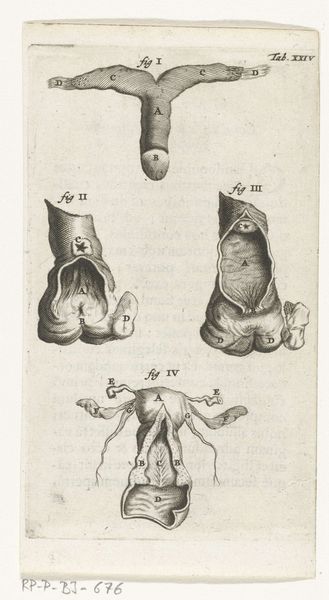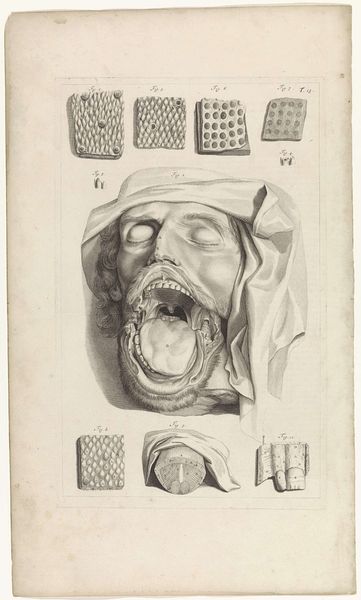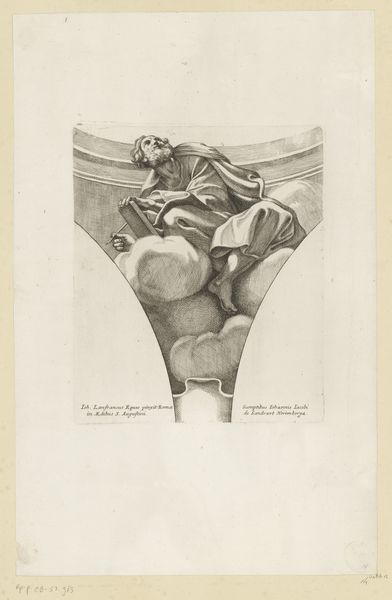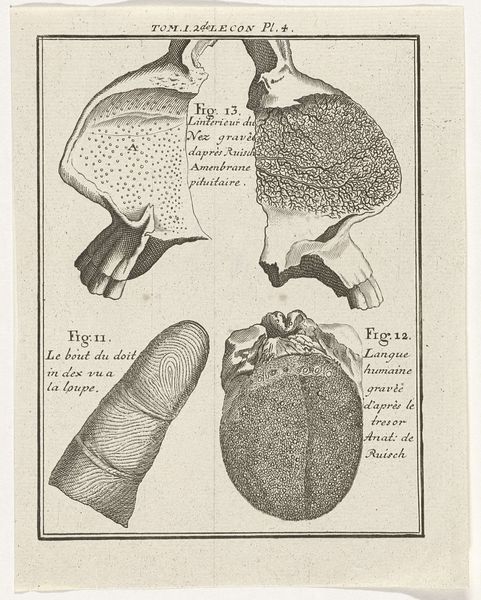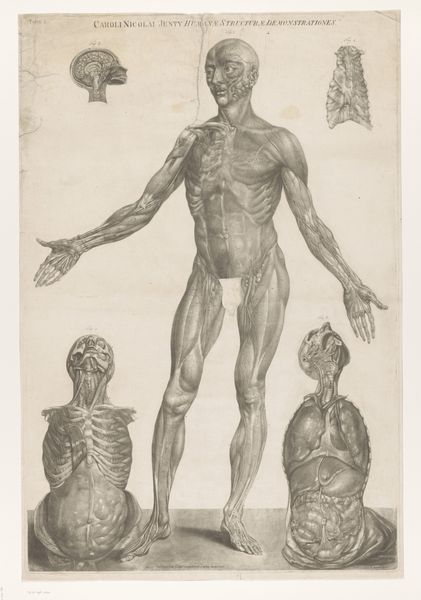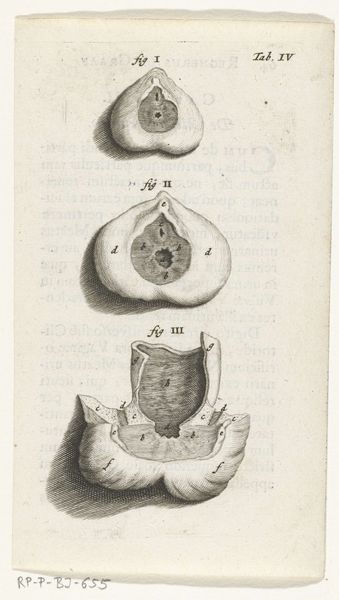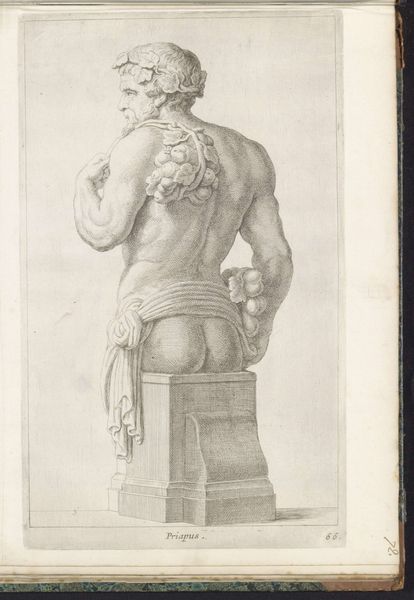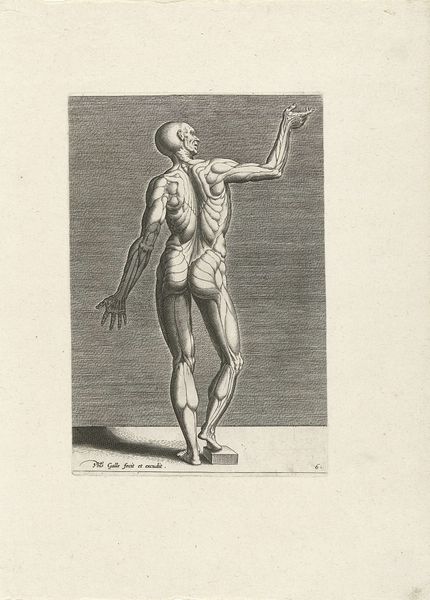
drawing, print, engraving
#
drawing
# print
#
pencil sketch
#
11_renaissance
#
engraving
Dimensions: height 261 mm, width 171 mm
Copyright: Rijks Museum: Open Domain
Curator: Before us, we have Willem ten Rhijne's "Anatomische studie van twee rompen," created between 1670 and 1672. It's rendered in engraving, drawing, and printmaking techniques. Quite a fascinating piece. Editor: My first reaction? It’s unsettling! The exposed anatomy contrasts so sharply with the stoic expression on the one figure. He looks almost contemplative, even resigned. The detailed cross-section alongside him makes me think about fragility and impermanence, even in science. Curator: Precisely. Consider the deliberate composition. The image is structured around binary oppositions – exterior and interior, health and ailment – emphasized through the two distinct figures. It's a study in duality, reflecting the anatomical investigations of the time but with an unsettlingly moral dimension. Editor: Definitely unsettling, as in the body with this distended stomach, and that text beneath the figures implying he has an issue with urination that needs addressing. I can imagine the emotional impact on contemporary viewers too. It’s one thing to conceptualize your inner workings; it's quite another to see them rendered so vividly, to come face to face with mortality. And maybe Rhijne knew what emotional chords it would hit, and wanted his work to resonate through centuries, just like any other artist. Curator: Perhaps so, but the rationalist elements dominate. Rhijne is employing very particular strategies for dissecting form and translating medical knowledge. Notice, for example, the descriptive inscriptions labeling organs. This piece reflects a moment when scientific observation was becoming paramount, an urge to map, classify and compartmentalize. Editor: I suppose that's why the body has the one little distended bubble drawn that appears to contain other figures within! Still, that sense of emotional impact is unavoidable, and its formal elegance heightens the intellectual content for sure. It makes you ponder on our shared physicality. Curator: Agreed. The interplay of the empirical and emotional speaks to the inherent paradox of being human – both a collection of anatomical structures, and feeling organisms responding to it all. Editor: It strikes a chord, like some whispered, ancient dialogue between flesh and the soul. I find myself strangely moved, maybe because in the end we're all walking anatomical studies too!
Comments
No comments
Be the first to comment and join the conversation on the ultimate creative platform.
